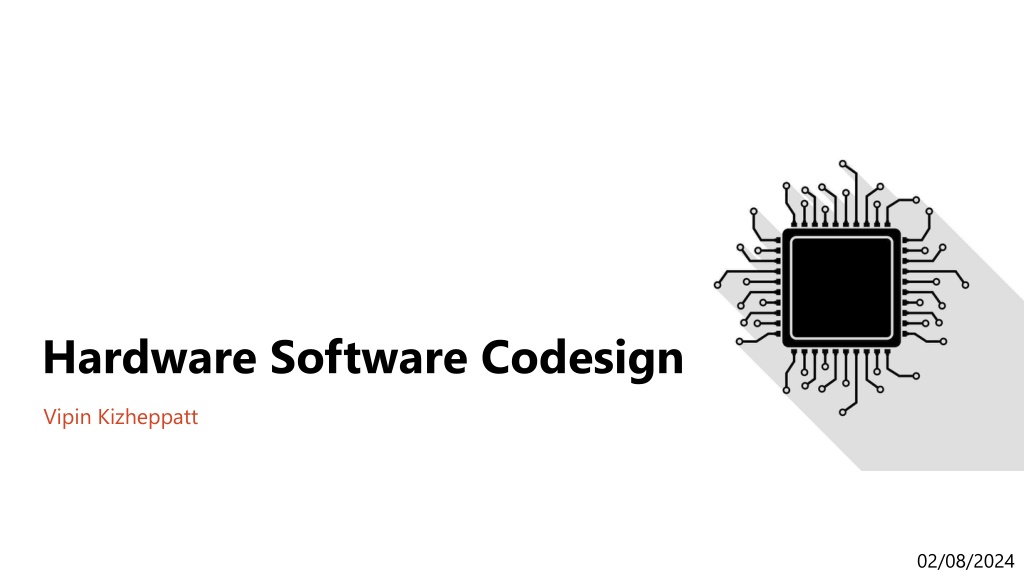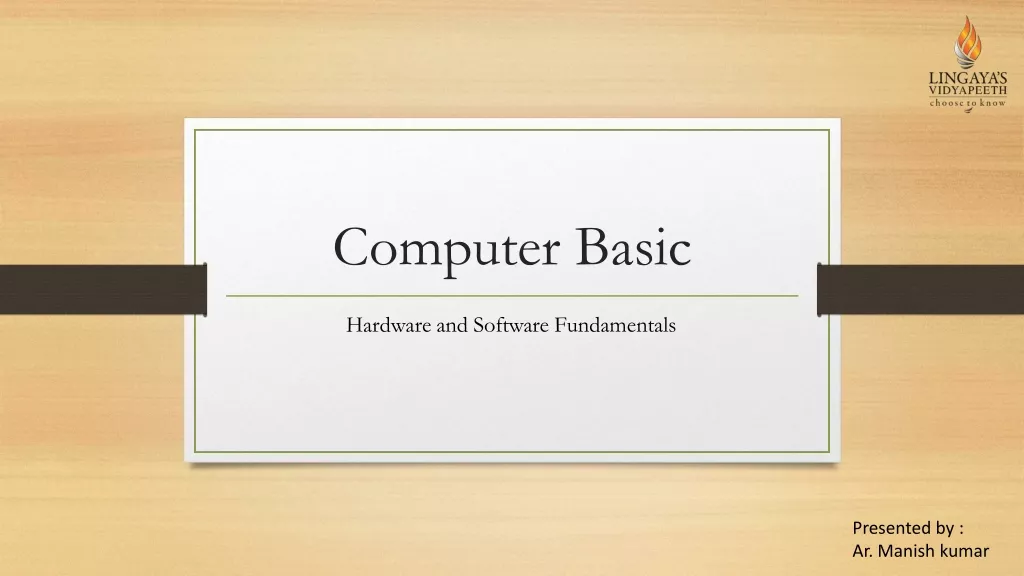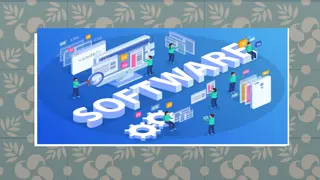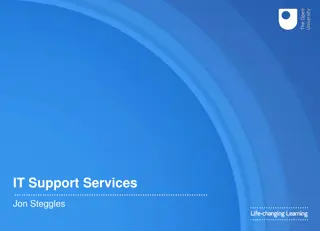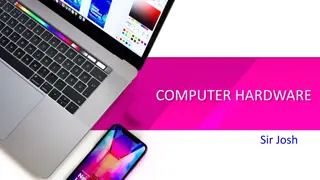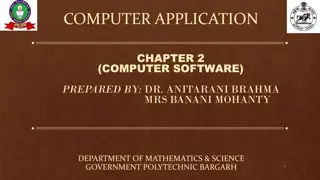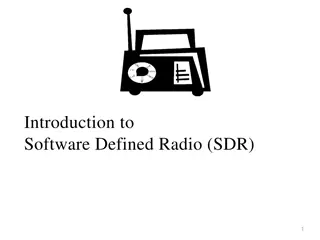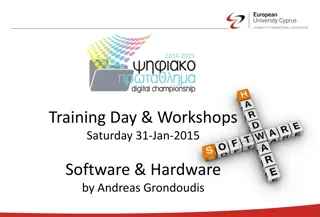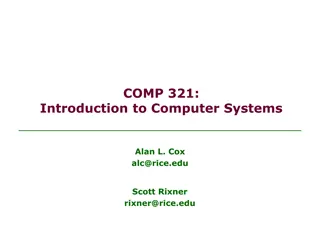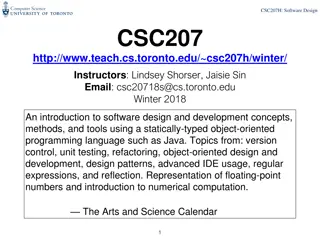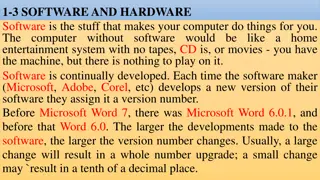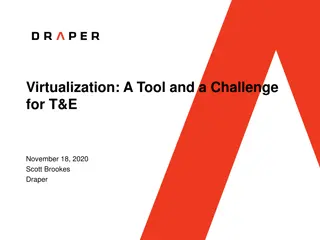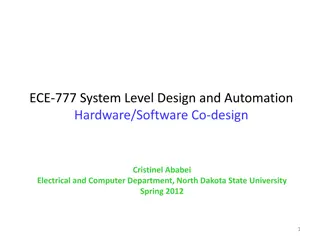Hardware-Software Codesign Course Details
This comprehensive hardware-software codesign course presented by Vipin Kizheppatt covers various aspects such as course management, objectives, prerequisites, evaluation components, software fundamentals, and practical applications. The course aims to equip participants with the skills to design and implement IPs, develop drivers, work with embedded systems, and utilize high-level synthesis techniques. Additionally, it delves into digital circuit design, computer architecture, and Verilog HDL. The evaluation components include mid-semester exams, lab assignments, projects, and theoretical assessments. Explore the world of hardware-software co-design with this informative course!
Download Presentation

Please find below an Image/Link to download the presentation.
The content on the website is provided AS IS for your information and personal use only. It may not be sold, licensed, or shared on other websites without obtaining consent from the author.If you encounter any issues during the download, it is possible that the publisher has removed the file from their server.
You are allowed to download the files provided on this website for personal or commercial use, subject to the condition that they are used lawfully. All files are the property of their respective owners.
The content on the website is provided AS IS for your information and personal use only. It may not be sold, licensed, or shared on other websites without obtaining consent from the author.
E N D
Presentation Transcript
Hardware Software Codesign Vipin Kizheppatt 02/08/2024
Course Management oLecture Monday, Wednesday, Friday 10 AM oLab Reconfigurable Computing lab Tuesday, Thursday oInstructor Vipin Kizheppatt D212, EEE Department Consultation: Tuesday 4:00-5:00 PM 2
Course Objectives o You should be able to design and implement moderate to complex IPs with standard bus interfaces such as AXI4, AXI-Stream etc. o You should be able to develop drivers for the IP blocks o You should be familiar with embedded Linux and real- time operating systems o You should be able to design moderately complex IP blocks using high-level synthesis (HLS) 3
Prerequisites o You (https://youtube.com/playlist?list=PLXHMvqUANAFPO4id07GQg gl64FS06TYWN&si=AsMSry7wNRfW1GCe) o You should be quite familiar with C/C++ programming language (https://youtube.com/playlist?list=PL98qAXLA6aftD9ZlnjpLhdQAO FI8xIB6e&si=1NN6e6zOklZDiEe0) o You should have strong background in digital circuit design o You should have a good understanding of computer organization/architecture should be quite familiar with Verilog HDL 4
Evaluation Components EC No. Evaluation Component Duration (min) Weightage (%) Date & Time Nature of Component 8/10/24 (11:00-12:30) 1. Mid Sem 1.5 hrs 20 Closed Book 2. 3. Lab/assignment Project and Viva Lab Comprehensive Comprehensive (Theory) - - 20 20 To be announced To be announced Open Book Open Book 4. 5 hrs 25 To be announced Open Book 5. 2 hrs 15 11/12/24 (AN) Closed Book 5
Software o Software is composed of code and data o Code corresponds to set of instructions supported by a processor o Data corresponds to registers and memory locations used by the code during execution 6
Software o Aim Add 20H and 30H and store the result in memory C Code Assembly Code Hex Code char a=20; MOV A,#20 3E 20 char b=30; MOV B,#30 06 30 char c; c = a+b; ADD A,B 80 MOV [000A],A 32 0A 00 7
Software o Modern computers use a stored-program model for program execution 8
Software o Software does not exist without hardware!! o In software-based systems, applications are implemented as different set of instructions (software) mapped to the same hardware architecture o This is the greatest advantage of software also flexibility o For implementing a new application, same hardware can be used with a different set of instructions o Converting software written in a high-level language to machine language (compilation) is also a fast process 9
Software o How fast a software-based system executes depend upon several factors o Roughly it can be mapped to the number of instructions, number of clock cycles per instruction and the clock frequency at which the processor runs execution Time = #instructions x clock cycle/instruction x clock period o Practically we cannot keep on increasing clock frequency or reduce clock cycle/instruction 10
Software o Another limiting factor of software implementation is power consumption o In stored program model, often data/instruction needs to be fetched from external memory o Inter-chip communication is one of the most power consuming operation (due to large driving current) o Again since applications need to be mapped to a fixed hardware architecture, implementation may be suboptimal increasing execution time and power consumption 11
Hardware o Hardware (here we are dealing only with digital circuits) and built using gates and flip-flops o The major advantage of hardware is it can be custom designed for a specific application o This increases their performance (throughput) and power consumption compared to a software implementation o But hardware is inherently inflexible o Their design and development process is more complex and takes more time compared to software counterpart 12
Hardware-Software o In a hardware-software co-design approach we try to exploit advantages of both domains o As a thumb rule, hardware is very efficient in implementing data intensive applications (usually referred as data path) o Software is more appropriate for control intensive applications (usually referred as control path) o In a codesign approach, we implement data processing portion of the system on custom hardware and use software to control them 13
Thank you any questions 14
